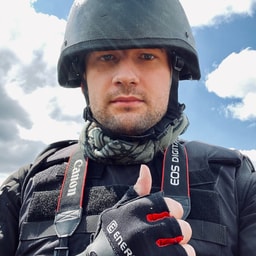The storm is thickening — the Kremlin keeps advancing new threats of a full-fledged invasion of Ukraine in the near future.
According to numerous reports from the intelligence community and media, Russia has currently concentrated between 94,000 and 100,000 combat-ready troops in close proximity to the Ukrainian border.
Russia upped the stakes on Dec. 1. President Vladimir Putin demanded for NATO to guarantee that it wouldn’t expand to include Ukraine. On the same day, the Kremlin launched military exercises with 10,000 troops in the country’s Southern Military District adjacent to Ukraine, as well as the Russian-occupied Crimea.
Right now, nobody can say for sure whether this is bluff.
What if the Kremlin does decide to invade Ukraine? Here’s what the intelligence and expert community think can happen.
What would the new war’s first hours look like?
Speaking to the Military Times on Nov. 21, Ukraine’s military intelligence Chief Brigade General Kyrylo Budanov said Russia is probably preparing to launch a new blitzkrieg in late January or early February.
The first step would likely include massive psychological warfare action, such as instigating “unrest, through protests and meetings” to undermine the country’s ability to fight back, the general told the Military Times.
The military action would likely involve airstrikes, artillery, and armor attacks followed by airborne assaults in Ukraine’s east, as well as amphibious offensives in Odesa and Mariupol, according to the Ukrainian intelligence.
On top of that, a smaller advance may be expected across the northwestern border with Belarus.
The outlet published a map by Ukraine’s military intelligence showing the most probable Russian strike directions coming from occupied Donbas, Crimea, and Russia’s southwestern regions bordering Ukraine.
The blitz may be aimed at seizing most of Ukraine’s territory east of the Dnipro River, as well as the Black Sea coastline.
According to Ukrainian intelligence, as of Nov. 20 Russia had deployed 40 battalion tactical groups, including 94,000 troops, 1,200 tanks, 2,900 armored fighting vehicles, 1,600 artillery pieces, 330 airplanes, 240 helicopters, 75 maritime vessels, and six submarines.
Right now, according to intelligence, Russia is able to immediately deploy at least 3,500 airborne and special operations troops.
This whole force may soon rush into Ukraine.
According to General Budanov, nasty winter weather would not be a significant obstacle to the Russian troops or the Ukrainian defenders.
Is a full-scale invasion the only scenario of escalation?
Not at all.
According to the Institute for the Study of War (ISW), a Washington D.C.-based think-tank, there are three potential scenarios: Russia’s massive military deployment to Belarus to counter an alleged NATO invasion, a massive deployment to Donbas against an alleged Ukrainian attack — and a full-scale invasion beyond Crimea and Donbas, which is envisaged by the Ukrainian intelligence.
The ISW considers the full-scale offensive the least likely of the possible scenarios.
What are other signs of Russia preparing for escalation?
In its Nov. 30 report, the ISW reported an increase of Russian command and control elements in Donbas or southern or western Russia near the Russian-Ukrainian border in November.
Russia has also been seen decreasing its bandwidth on railways for commercial enterprises since October, which might also potentially suggest logistical preparations for war. The ISW has also recorded the mobilization of the Donbas militant reserve forces under the guidance of Russia’s 8th Combined Arms Army.
If Russia is preparing so thoroughly, why is the full-scale invasion less likely than other scenarios?
The ISW is not recording many crucial indicators of a full-fledged, combined arms operation being prepared by Russia.
In particular, the Russian troops concentrated at the border seemingly fall short of the mobilization of artillery at the regiment and brigade level. The same goes for airborne forces and the Caspian Sea elements in the Black Sea.
And the migrant crisis in Belarus is intensifying, probably to set conditions for a Russian military deployment in Belarus, as the ISW estimates. But so far, as of late November, no additional Russian ground forces have been seen being deployed to Belarus.
And last but not least, the ISW does not indicate the mobilization of the Russian Strategic Rocket Forces, in other words, the nuclear stockpile, which is also might be “an indicator that an operation is imminent or already underway.”











